Nestled near the riverside in Amsterdam, Iris van Herpen’s atelier is a reflection of her work in blending fashion with art, science, technology, and the natural world. We speak over a Zoom call in September, a few weeks after she wrapped up her couture show in Paris. The visionary Dutch couturier’s eyes settle on the serene water body in front of her; it is those effervescent and transformative qualities of water that form her approach to design.
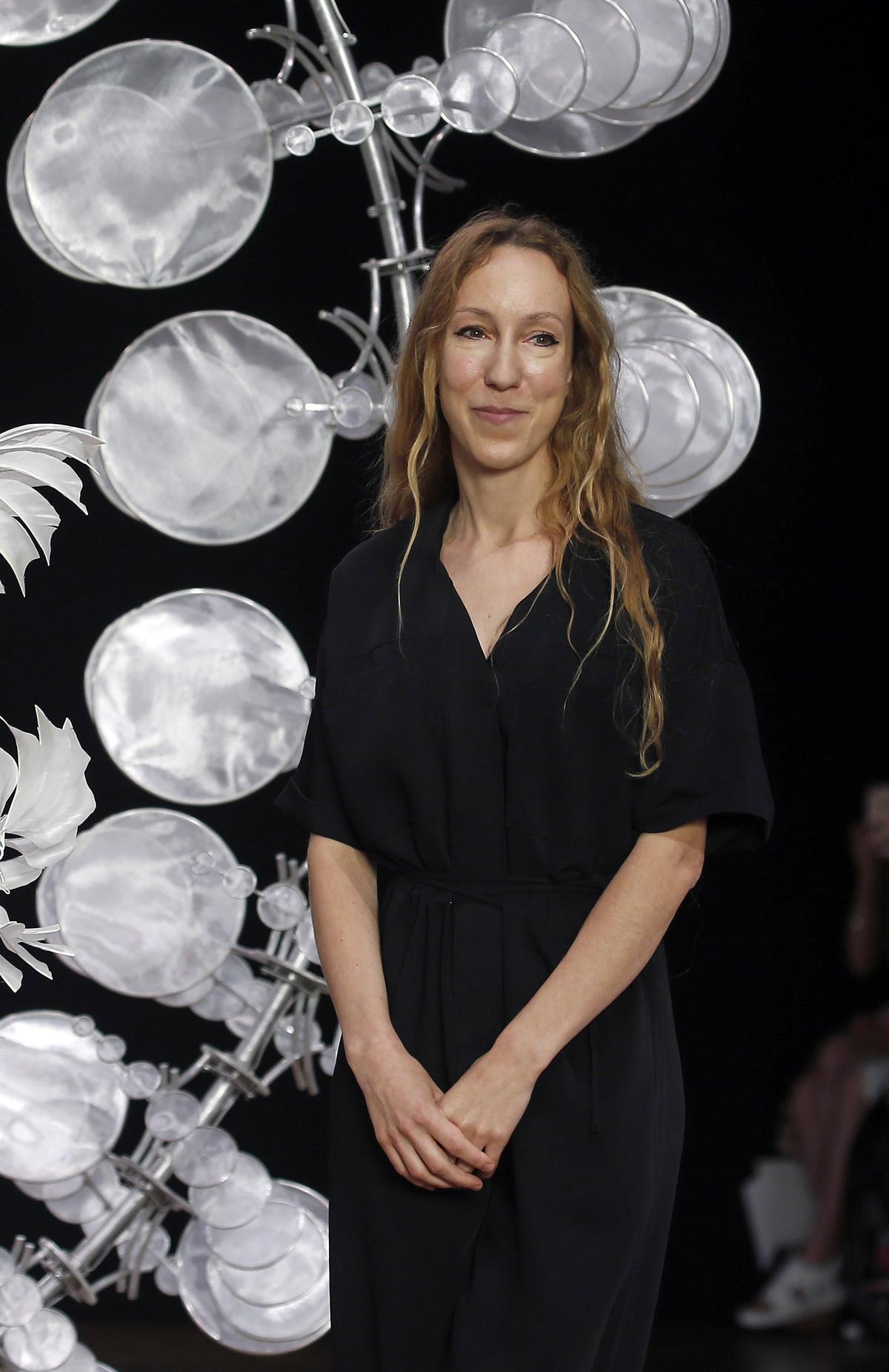
Dutch designer Iris van Herpen
| Photo Credit:
Getty Images
Sometimes quite literally — as the ‘Water Dress’, created in collaboration with artist Daphne Guinness and photographer Nick Knight and currently held in The Museum at FIT, and at other times, as the backdrop for her fluid clothes, as seen in the Carte Blanche collection video that was shot underwater with French dancer and freediver Julie Gautier.
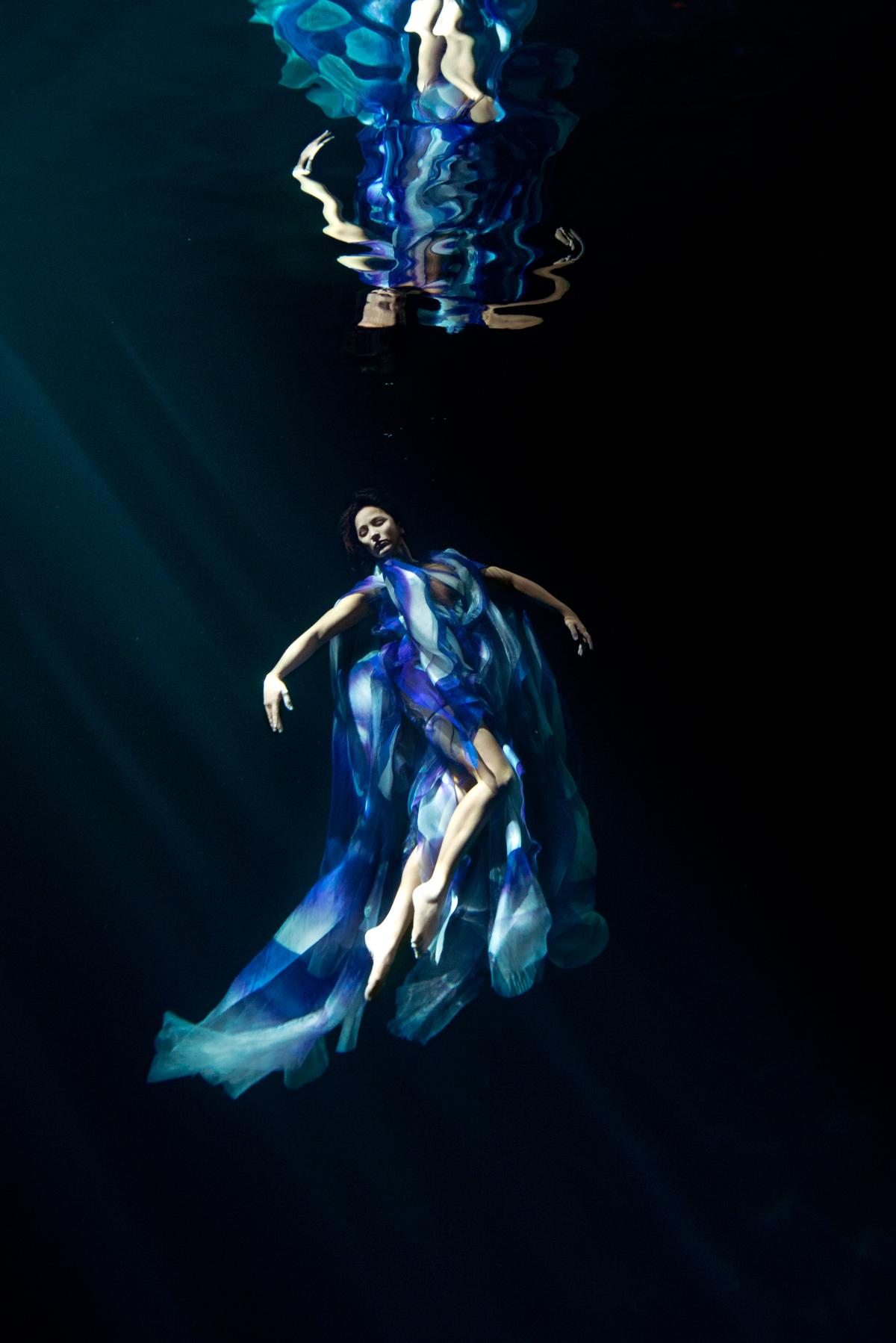
Carte Blanche
“When you look at everything that exists, it is all just energy,” says van Herpen, 40, her voice an assuring monotone. Perhaps this is why her clothes are rarely just garments; they are rather, dynamic sculptures that appear almost alive. Case in point: the dresses in the ‘Root of Rebirth’ collection inspired by mycelium networks, the underground fungal systems that connect forests. It features intricate, root-like structures that seem to be alive, embodying her vision of nature’s hidden connectivity. Or the ‘Magnetic Dress’ in collaboration with a Dutch artist, which uses resin mixed with iron filings manipulated by magnets to create organic, almost alien-like textures that grow from the fabric, resembling living organisms.
Visceral expression of motion
To really understand the essence of van Herpen’s 16-year-long career, I reach out to veteran fashion critic and an ardent fan of the designer, Suzy Menkes. In her email, she succinctly captures what sets the designer apart in fashion today: “Iris invents everything, particularly the fabric, if that’s what it could be called,” she writes. “She uses materials — or did right at the beginning of her career — that had never been seen or used before. Her designer skill has been to take the extraordinary and make it wearable and usable.”
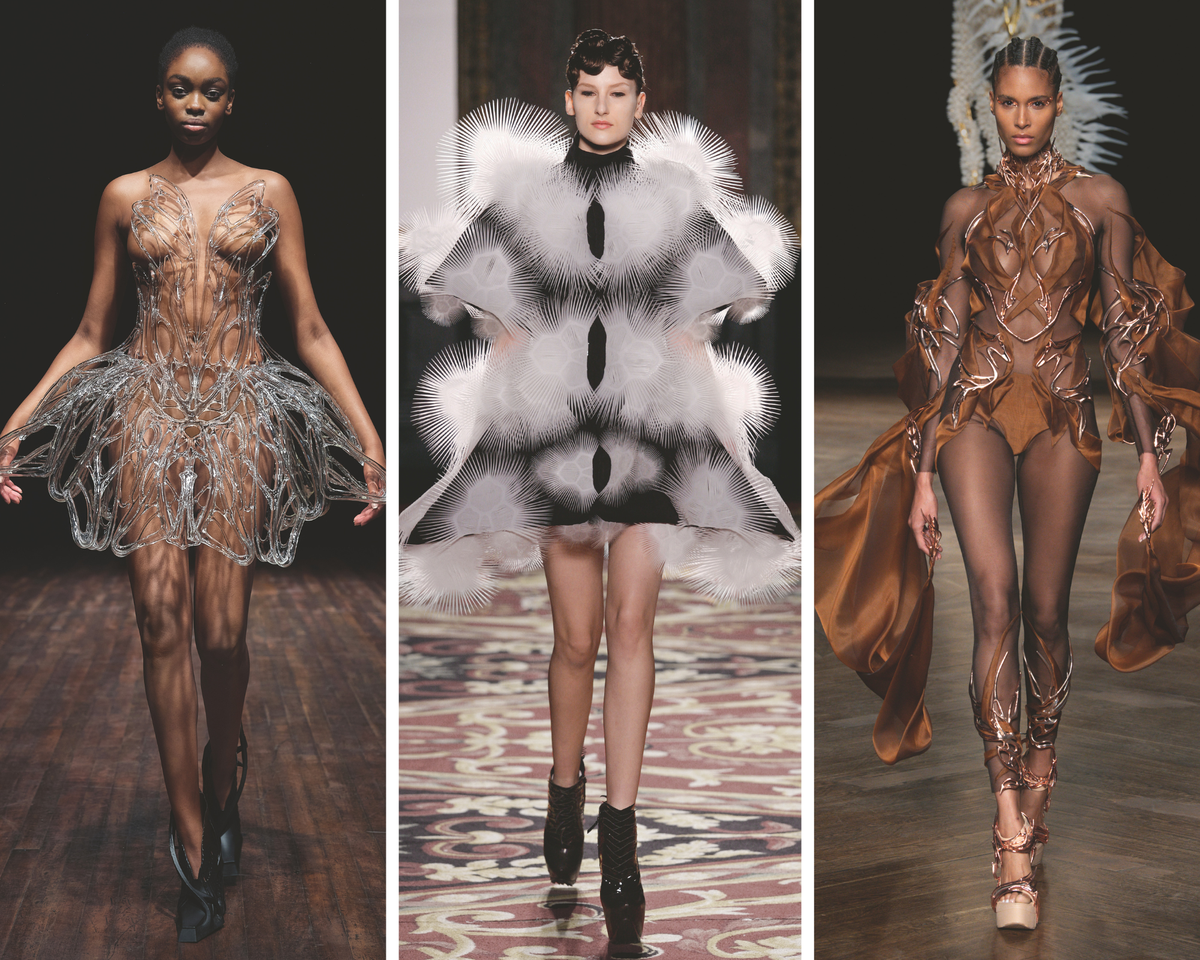
Using technology, art and philosophy to transform material into a visceral expression of motion and life is omnipresent in the work she creates today. As is her relationship with classical dance — being a ballet dancer, van Herpen has a deep connection to the physicality of the body. In 2023-2024, she celebrated 15 years of her brand with an exhibition at Musée des Arts Décoratifs in Paris.
The exhibition titled Carte Blanche featured over 100 pieces from her oeuvre, organised into nine themed rooms. Among them, the ‘Water Dress’, which simulates splashing water by employing moulded sheets of acrylic, a technique pioneered by van Herpen to evoke the illusion of motion in a still form, stands alongside collaborations with artists and scientists, reflecting her fascination with nature and transformation.
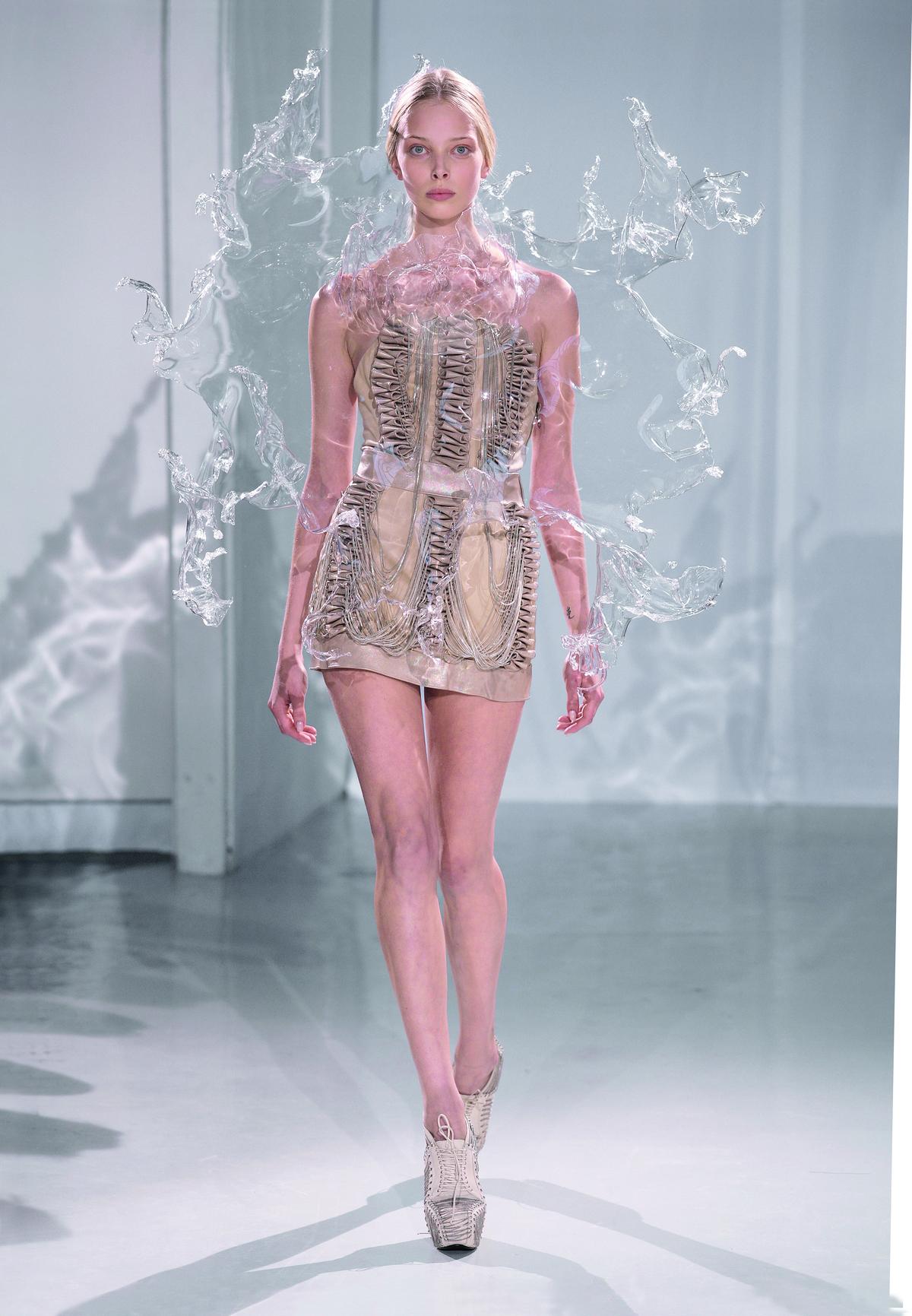
Water Dress
| Photo Credit:
Michel Zoeter
The retrospective took five years to curate, and for van Herpen, it was also a way to track her own change and growth over the years. “It was like looking at my own diary, of who I was at each moment,” she explains. “So, choosing pieces wasn’t about logic — it was pure intuition.”
As one meandered through the exhibition, another element of van Herpen’s work became apparent — that her use of materials is “primal”. From the tensile strength of plant stems, the delicate intricacy of spiderwebs, and the incredible world of mushrooms, her artistic expression spans the gamut of nature. Fashion, in many ways, is her way of visualising the interconnectedness of the natural world and human life. To that end, she has created couture with recycled plastic, digitally printed clothing, and harnessed kinetic energy in calf-length dresses.
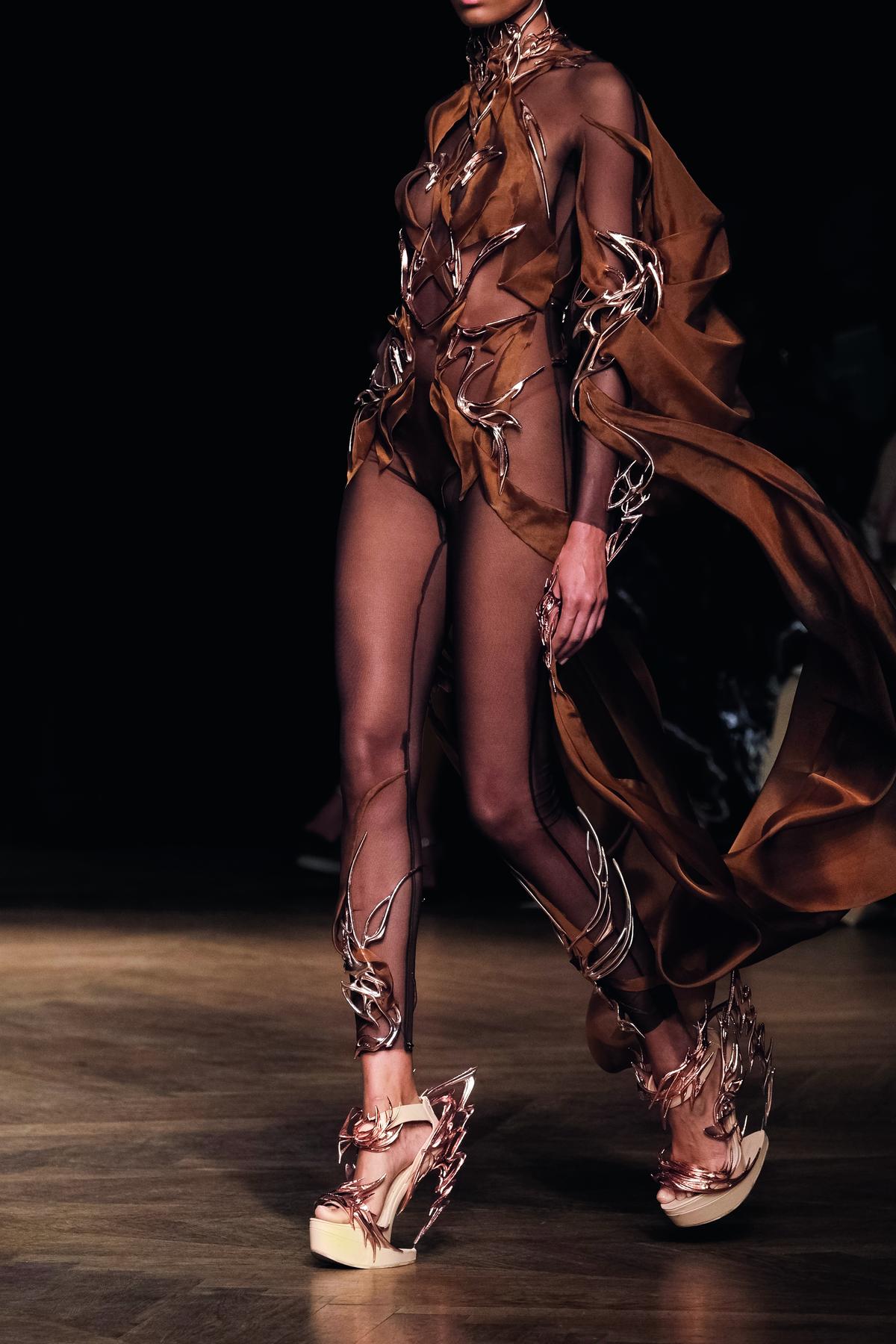
Earth on your sleeve
The examples of van Herpen’s wildly wearable creations are several: be it the avant-garde gown from the Spring/Summer 2021 collection that Sonam Kapoor Ahuja wore for a Vogue India feature, featuring a 3D-printed bodice and ethereal, floating layers; or the outfits from the ‘Earthrise’ collection. The pieces — inspired by the iconic photo of Earth taken from space during the Apollo 8 mission — were crafted from layers of fine silk and metallic threads, and evoked the colours and curvature of the planet as seen from 570 km away.
Futuristic and cutting-edge, but natural
Sustainability, too, takes the steering wheel in the design process. According to van Herpen, the future of sustainable couture lies in balancing innovation with natural materials and developing biodegradable alternatives that retain a luxurious, futuristic feel. “Even 10 years ago, my work felt futuristic, but it relied on synthetic materials,” she explains. Her first-ever outing as a designer was a dress made out of 150 hangers. The ‘Hanger Dress’, as it came to be known, demonstrated her meticulous approach to transforming everyday objects into high-fashion. “Now, I want futuristic design to mean natural, with an organic presence.”
To make her vision come true, she is collaborating with universities and research institutions, in addition to the already existing laboratories she works with. “They’re often cutting-edge, sometimes even two steps ahead of companies,” she says, citing 4D printing as her next big step. The technology will take the dynamism of 3D printing further, where designs will be able to change shape over time, responding to the environment or wearer’s movements. “The pieces will perform a kind of micro-dance around the body,” she says. Imagine a dress that could change with your body, and accommodate all of life’s changing cycles, from giving birth to growing old.
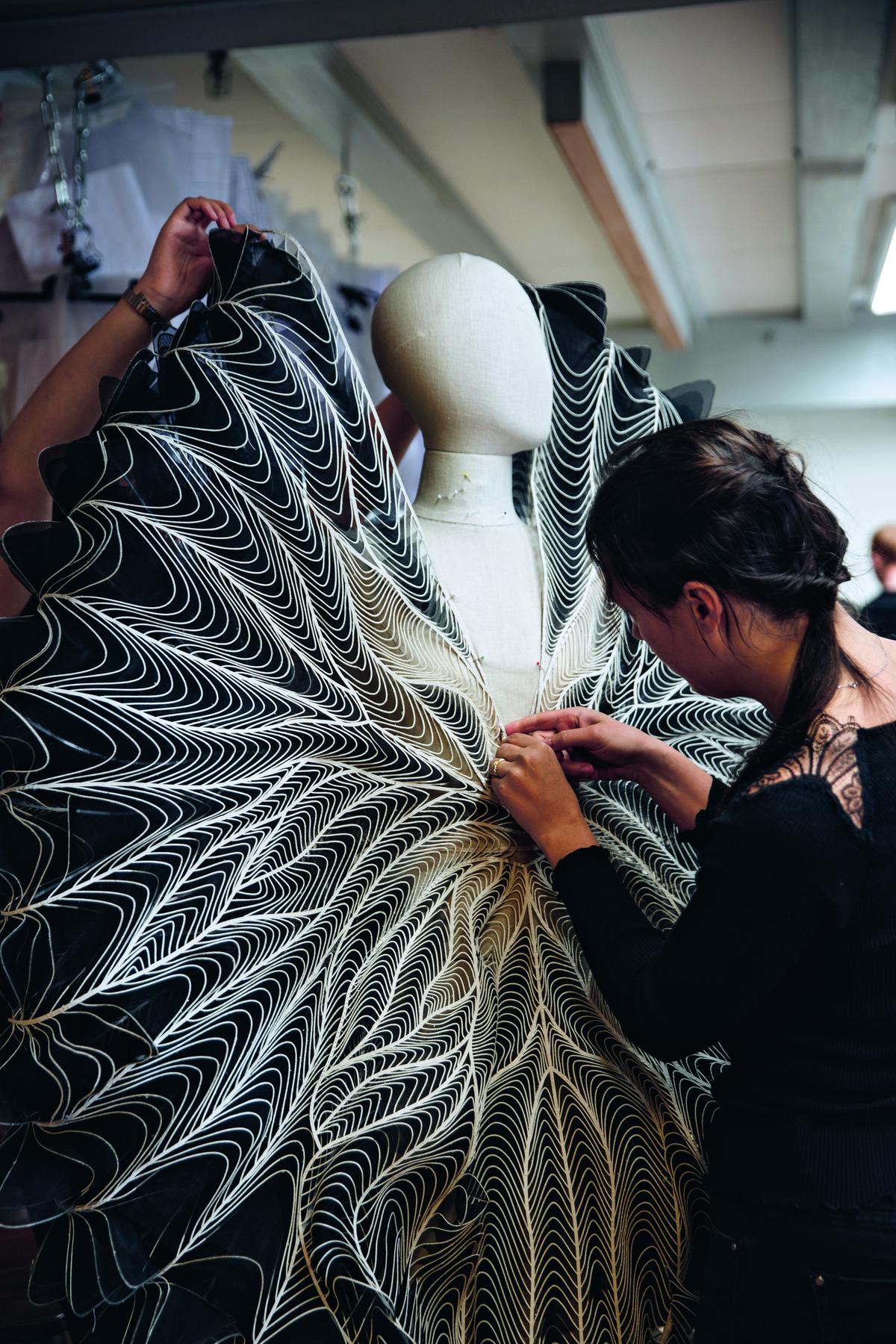
“What sets Iris apart is her creative process and the way she thinks about fashion and its place in our contemporary world,” says Melissa Marra-Alvarez, curator of education and research at The Museum at FIT, also home to the ‘Water Dress’. “Beyond creating unique or beautiful dresses, she understands the interdisciplinary nature of fashion.” And to reflect the high level of expert choreography required to create collections using techniques such as laser-cutting and custom 3D-printed fabrics, a synchronised dance of specialists, including scientists and architects, come together at the atelier.

Presentations of the collections, too, experiment and innovate. From museums to galleries, and runway shows, no space is out of context for van Herpen’s couture creations. For her Paris Haute Couture Week show, she eschewed the runway entirely — choosing instead to show in an art gallery. Models came attached to canvases, balancing on a platform, their hair set into the canvas like an impasto portrait. For about an hour and a half, audiences walked around and took in the beauty of the moment and her collections up close. It was a rare occurrence where people were invited to step into her world. Future installations will likely follow this format, she says. “I want to open people’s eyes and create a profound experience.”
The next leg of Carte Blanche will open at Kunsthal Rotterdam in September.
The writer is an independent journalist based in London, writing on fashion, luxury and lifestyle.
Published – February 07, 2025 03:47 pm IST